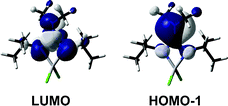Lithium and aluminium complexes supported by chelating phosphaguanidinates†
Abstract
![[double bond, length as m-dash]](https://www.rsc.org/images/entities/char_e001.gif) C
C![[double bond, length as m-dash]](https://www.rsc.org/images/entities/char_e001.gif) NiPr, inserts into the lithium–phosphorus bond of in situ prepared “Ph2PLi(THF)n” to afford the
NiPr, inserts into the lithium–phosphorus bond of in situ prepared “Ph2PLi(THF)n” to afford the

* Corresponding authors
a
The Department of Chemistry, University of Sussex, Falmer, Brighton
E-mail:
m.p.coles@sussex.ac.uk
Fax: 01273 677196
Tel: 01273 877339
![[double bond, length as m-dash]](https://www.rsc.org/images/entities/char_e001.gif) C
C![[double bond, length as m-dash]](https://www.rsc.org/images/entities/char_e001.gif) NiPr, inserts into the lithium–phosphorus bond of in situ prepared “Ph2PLi(THF)n” to afford the
NiPr, inserts into the lithium–phosphorus bond of in situ prepared “Ph2PLi(THF)n” to afford the

 Please wait while we load your content...
Something went wrong. Try again?
Please wait while we load your content...
Something went wrong. Try again?
N. E. Mansfield, M. P. Coles and P. B. Hitchcock, Dalton Trans., 2005, 2833 DOI: 10.1039/B506332A
To request permission to reproduce material from this article, please go to the Copyright Clearance Center request page.
If you are an author contributing to an RSC publication, you do not need to request permission provided correct acknowledgement is given.
If you are the author of this article, you do not need to request permission to reproduce figures and diagrams provided correct acknowledgement is given. If you want to reproduce the whole article in a third-party publication (excluding your thesis/dissertation for which permission is not required) please go to the Copyright Clearance Center request page.
Read more about how to correctly acknowledge RSC content.
 Fetching data from CrossRef.
Fetching data from CrossRef.
This may take some time to load.
Loading related content
